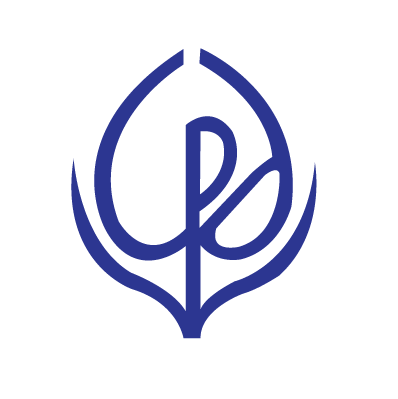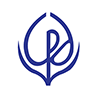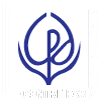Originally posted in The Daily Star on 1 June 2025
FY25: A year of fewer jobs, falling investment

When Finance Adviser Salehuddin Ahmed presents the national budget for the fiscal year (FY) 2025–26 tomorrow, he will have some encouraging numbers to share.
Exports and remittances are climbing, foreign exchange reserves have steadied, and the exchange rate has shown signs of stability. Imports, too, are beginning to recover.
Red-hot inflation, which has been hovering above 9 percent for more than two years, has finally started to ease. All these signs have prompted economists and businesses to cautiously suggest that the economy may be on the path to recovery.
Yet, the outgoing FY25 brought little progress in creating new jobs or setting up new production units, with the country recording its lowest GDP growth since the Covid pandemic.
The year began in upheaval, with student-led protests culminating in the fall of the Awami League government in August. Subsequently, the interim government, led by Nobel laureate Muhammad Yunus, assumed office.
It inherited a fragile economy. Inflation was high, reserves were dwindling, and a tight monetary policy was in place.
On top of this, worsening law and order and continued political uncertainty eroded investor confidence, further slowing both domestic and foreign investment.
As a result, economic growth in FY25 slumped to 3.97 percent, according to provisional data from the Bangladesh Bureau of Statistics. Youth unemployment rose sharply, and industrial activity remained sluggish throughout the year.
The unemployment rate increased to 4.63 percent, with 27 lakh people out of work, up from 24 lakh the previous year.
Labour force participation also decreased, falling to 48.41 percent from 50.27 percent, as job creation failed to keep pace with demand.
This is the backdrop against which the government will unveil its new budget, seeking to address deep-rooted economic wounds while advancing a wider reform agenda.
The upcoming budget will be slightly smaller in size and shaped in part by the country’s graduation from the UN’s least developed country category in December 2026. It will also reflect concerns over high US tariffs introduced under Donald Trump and the conditionalities tied to the ongoing $4.7 billion loan programme from the International Monetary Fund (IMF).
Economists and analysts have called the current moment “unprecedented” and are urging bold immediate and long-term reforms to steer the country back towards stronger growth.
“This year’s budget should be more than just a statement of spending and revenue. It must offer clear policy direction on how to stabilise the economy and ensure effective coordination between monetary and fiscal policies,” said Muhammad Abdur Razzaque, chairman of the local think tank Research and Policy Integration for Development (RAPID).
From industrial growth to employment and investment, Razzaque said, everything was affected in the post-uprising period. “It was really a challenging time for Bangladesh.”
“After the uprising, our top priority was to tame inflation and stabilise the balance of payments. But the contractionary monetary policies and import control measures were not supportive of investment or job creation, as well as economic expansion,” he added.
Sadiq Ahmed, vice chairman of the Policy Research Institute of Bangladesh, said fiscal policy in FY25 was hamstrung by poor domestic resource mobilisation.
“As a result, it was not geared towards supporting growth, investment or employment,” he noted.
“Much of the fiscal focus was on stabilisation, cutting the deficit by scaling back development spending. Efforts rightly prioritised reducing the Annual Development Programme by deferring large infrastructure projects.”
Selim Raihan, professor of economics at Dhaka University, echoed the view that encouraging private investment proved difficult in FY25 amid persistent structural challenges and political and economic uncertainty.
“Despite various incentives, such as tax holidays in special economic zones, concessional rates for targeted sectors and infrastructure spending, investment growth remained tepid,” said Raihan, also the executive director of the South Asian Network on Economic Modeling (Sanem).
He termed the contradictions in the country’s tax structure as a key constraint.
“The tax-to-GDP ratio remains among the lowest globally, limiting public investment capacity. At the same time, businesses complain of a high and uneven tax burden, erratic enforcement, and high compliance costs. All of these issues discourage investment,” he said.
While the government continued to support large infrastructure projects, offered subsidies to export-oriented industries, and pushed public-private partnerships, these initiatives struggled due to implementation delays and weak institutional coordination.
“The broader industrial policy is still too reliant on the readymade garments sector,” said Raihan. “There has been little progress in diversifying into higher value-added industries.”
Although tax exemptions and reduced import duties for certain sectors provided some relief, policy inconsistency dented investor confidence.
Added inflationary pressures and currency volatility also made firms more cautious, further slowing capital investment, according to the economist.
“On employment, fiscal policy fell short in FY25. Public projects in rural development generated some short-term jobs, but formal private sector hiring remained subdued,” he commented.
Mustafizur Rahman, a distinguished fellow at the local think tank Centre for Policy Dialogue (CPD), said that creating jobs requires more than just fiscal policy.
“It needs support from monetary policy, institutional reforms, and incentive frameworks,” said Rahman.
The economist pointed out that despite attempts to rein in inflation, fiscal policy alone was not enough. Monetary tightening will take time to filter through the economy.
Given these constraints, fiscal measures mostly aimed at offering targeted incentives, such as tax cuts for certain sectors, reduced duties on imported raw materials, and high tariffs to shield domestic industries.
“However, those measures did not yield the intended results,” he said.
“They failed to significantly stimulate investment, industrialisation, or job creation,” Rahman added. “One major reason was the sharp rise in interest rates, driven by contractionary monetary policy to contain inflation.”
He also said that non-economic factors played a role. “Political instability and a deteriorating law-and-order situation made investors wary, something policy incentives alone could not overcome.”
Even initiatives such as the investment summit organised by the Bangladesh Investment Development Authority and steps to strengthen economic zones were insufficient to offset the broader negative environment, he commented.
“The impact is clear,” Rahman said. “Imports of capital machinery fell sharply, as did letters of credit.”
“And the kind of job creation that industrialisation was supposed to deliver simply did not happen.”
Referring to new employment figures, Rahman said, “According to the latest Labour Force Survey using the ICLS-19 definition, total employment actually declined by 21 lakh in the first two quarters.”
“So, despite fiscal efforts, the broader economic climate, including inflation management and institutional capacity, was not conducive to drawing in investment or generating new jobs,” he concluded.
RAPID Chairman Razzaque also said that without improved revenue collection, maintaining fiscal discipline will be difficult. “And without that, essential public investment in sectors like health and education will suffer.”
“The government is relying more on borrowing, which in turn is pushing up interest payments and further narrowing fiscal space,” said Razzaque.
Economist Sadiq Ahmed said that protectionist trade policies also continued to hamper export growth in FY25. “Export subsidies offered limited support, but their impact was overshadowed by an anti-export bias.”
Thankfully, the shift to a more flexible, market-based exchange rate provided a much-needed boost to exports and remittances, he added.
“That has been the most significant policy reform of FY25,” said Ahmed.
“Other tax incentives to spur private investment and foreign direct investment have not delivered much in recent years, and FY25 was no different,” he said.
He argued that these incentives, which come at the cost of lost revenue, should be thoroughly reviewed.
“Global experience shows that improving the overall investment climate is far more effective than offering tax breaks,” Ahmed said.



